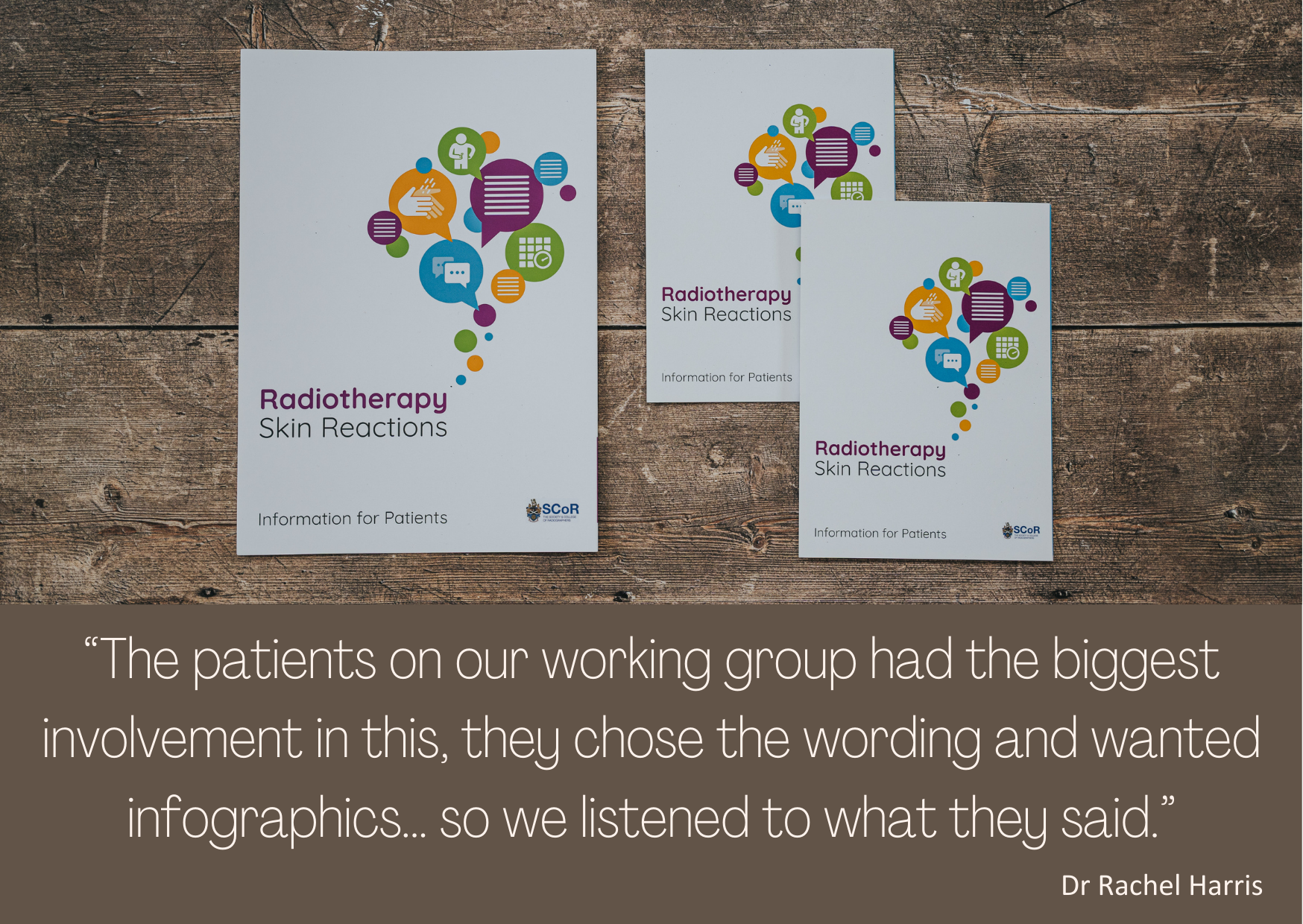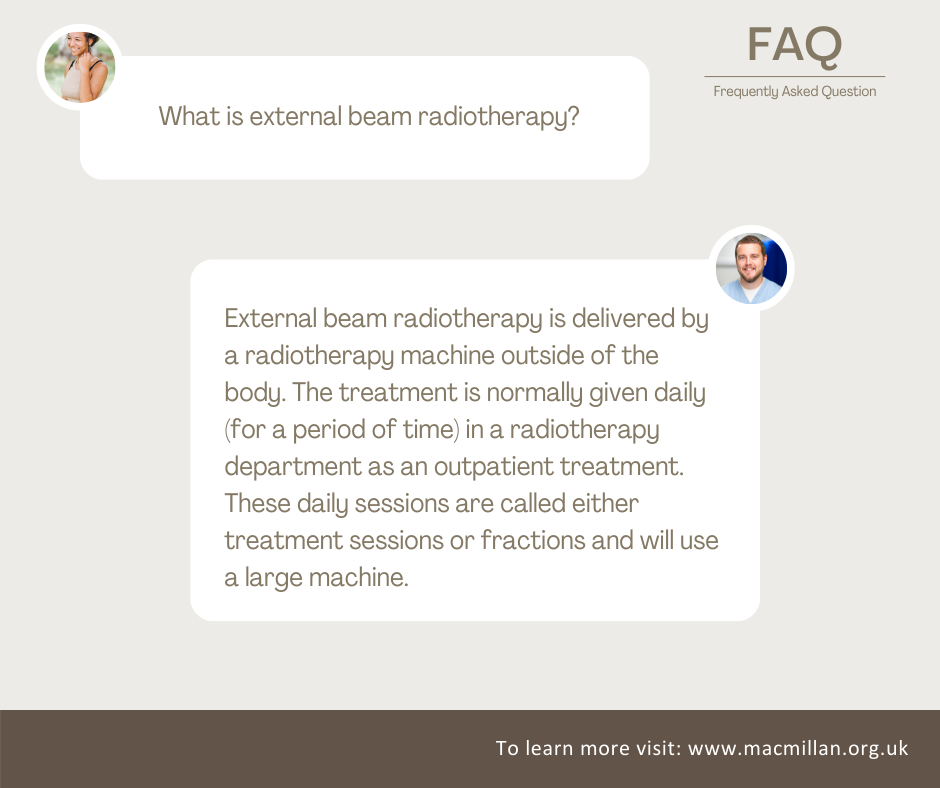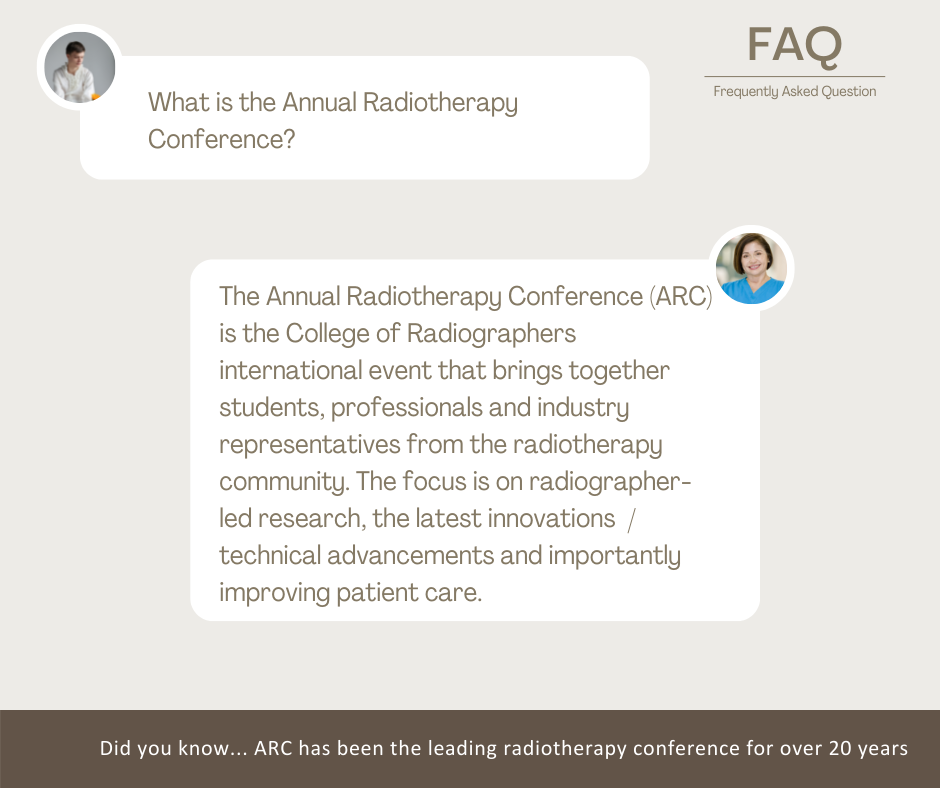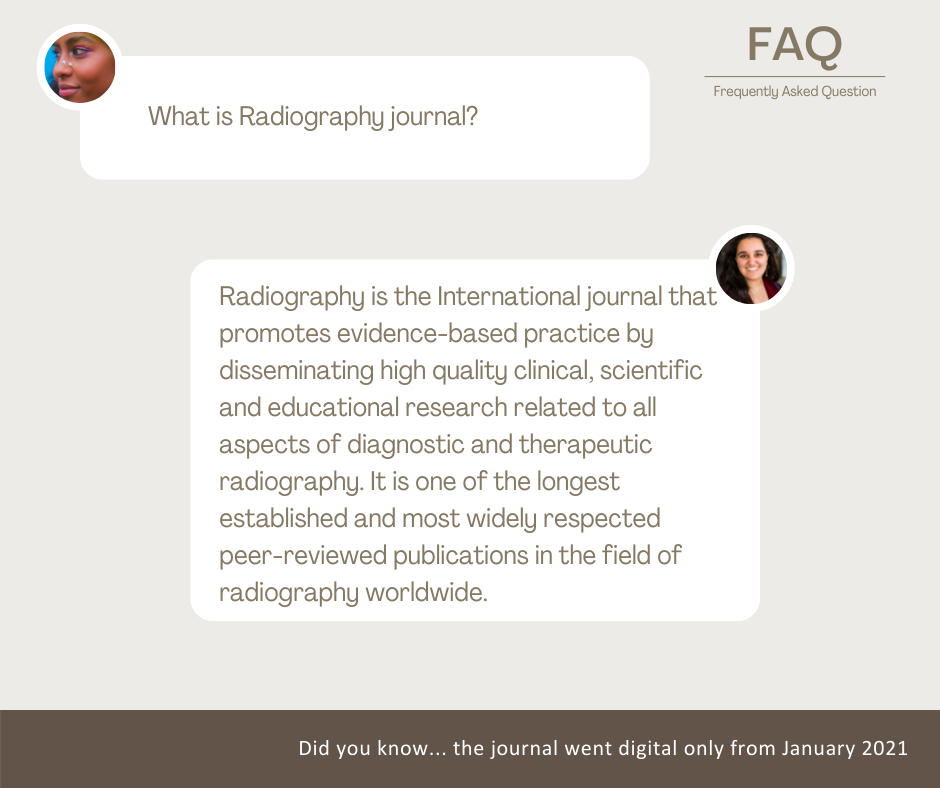In this section
In This Section
The Radiation Dermatitis guidelines (skincare guidelines), leaflets and infographic set saw the College of Radiographers reimagine how we produced guidance by partnering with patients, to put their needs first.

What we did
A patient undergoing external beam radiotherapy may experience a skin reaction as a common side effect of their treatment. These reactions can be painful and distressful, with some reactions limiting future radiation doses and treatment schedules.

In May 2020, the Society and College of Radiographers (SoR | CoR) released an update of radiation dermatitis (skin care) guidelines which included infographic leaflets for patients and healthcare professionals. Endorsed by the charity Breast Cancer Now, the new guidelines were based on a systematic review of available evidence undertaken by a collaboration between UK healthcare professionals, patients / patient representatives and international specialists.
At the time of publication Dr Rachel Harris, Head of Professional Practice and Education at the SoR|CoR said:
"Despite the publication of a number of best practice guidelines for skin care, radiotherapy departmental practice for the prevention and management of acute radiotherapy and skin toxicity has been slow to change.
A wide range of methods and topical applications are used, often with very little or no evidence base. This review looked to new research evidence published since November 2014.”
Video: Promotional clip of the skincare guidance leaflet designed for patients.
Influencing healthcare professionals
To launch the new guidelines, Dr Rachel Harris delivered a key note speech at the College of Radiographers Annual Radiotherapy Conference in January 2020. Alongside Professor Heidi Probst, Professor of Radiotherapy and Oncology at Sheffield Hallam University, Rachel provided an in depth preview of the guidance as well providing hard copies of the innovative new patient infographics that had been produced.

The core focus of the presentation Radiotherapy Skin Care: What Do Practitioners Need and What Do Patients Want? - stressed the importance of patient centric care and how the guidance recommendations were about patient comfort. From discussing and documenting skin care routines directly with the patient to providing them compassionate self-care and wellbeing advice, acting with the ‘patient perspective’ in mind was encouraged.
Rachel also had the audience reflect on the point that for their patients maintaining dignity and having a good quality of life, may be the most important thing. Therefore while it may not be possible to stop or reduce rates of skin reactions from occurring, there may be comfort and psychosocial benefits for the patient by using skin care products and following the new guidance.
Audio: Clip of Dr Rachel Harris' ARC2020 keynote speech: Radiotherapy Skin Care: What Do Practitioners Need and What Do Patients Want? [11:44]
Feedback from healthcare professionals
The following feedback was collected after the launch presentation of the new guidance at the Annual Radiotherapy Conference (ARC) in 2020:
- “I really liked the skin care presentation, I can’t wait to see the full guidance and I’m taking the infographic samples back to my department”
- “I really enjoyed Heidi's & Rachel's interactive session, made delegates think about their current practice and how we can improve patient care”
- “My favourite presentation at the conference was the one by Rachel Harris and Heidi Probst with their skin care guidance launch.”
- “Great to hear new skin care recommendations for making patients comfortable and I think the interactive session with Slido helped me understand the new guidelines better”
- “Rachel Harris and Heidi Probst gave a very well-researched, patient-focussed talk”
- “The evidence for skin care will be applicable to many depts and will have direct impact on our practice for skin care, especially as it will give patients choice.”
- “It was good to include an interactive session with the audience to identify the trends and advice given to skin care. Followed by the session which ruled out and clarified any myths.”
- “I really enjoyed Rachel and Heidi's talk on skin care. It was engaging, informative and interactive.”
- “Dr Rachel Harris and Prof Heidi Probst gave the best presentation at ARC 2020 - very interesting to see the range of skin care advice given from centres represented at the conference, coupled with clear guidance from SoR and memorable personal stories from Dr Harris about her experience.”
Impacting practice
The guidance and supporting leaflets received NICE accreditation in 2020. On publication, the full set was publicised internally to the Society of Radiographers membership (circa 32k at the time), across the College of Radiographers networks and partnerships, and publically via social media and the SoR and CoR websites.
The publicity package included online news articles, dedicated social media content, conference presentations, webinars for healthcare professionals, online download versions of the infographic leaflets as well as sample hardcopies of the patient information leaflet sent out internationally.

Image: Social media promotional materials developed for the skincare leaflet.
The combination of these materials gave healthcare professionals the resources they needed to put the new recommendations into practice. In particular the webinars and printed samples were very successful in impacting practice and embedding the recommendations with healthcare professionals. We heard from members who said:
- “My skin care advice will change in line with the new SOR guidelines”
- “Following ARC, Skin care information and advice to patients will be updated and new guidance booklets to be passed onto staff in department”
- “Departmental skin care instructions will be updated to fit with the new SoR guidance.”
- “Will pass on updated skin care advice, will also pass on various things learnt about what other departments are doing that we aren’t/ are potentially already looking into.”
- “I will be more considerate about the advice I give to patients in regards to knowing the best course of action for skin care.”
- “I will ensure comfort is explored in our next patient questionnaire. We will update skin care guidance for staff and patients.”
- “I have promoted the skin care information and the respire website with my colleagues”
- “I have been inspired to do better baseline skin assessment for the breast carcinoma patients after reading the guidelines”
- “I took the skin care guidance into my department and suggested additions to data that is already collected to include co-morbidities / intrinsic factors that may affect treatment reaction.”
- “I’ve ensured we use the skin care booklets in my department”
- “I introduced the patient information and staff infographic booklets to my team and we have been using them with patients. I think the patients really appreciate them as they are easy to read”
Supplementing learning
To support the guidance launch, two webinars were recorded for members of the Society of Radiographers. With 3701 therapeutic radiographers and 299 students studying therapeutic radiography courses, the College of Radiographers wanted to provide Society members with a new way of accessing the learning and understanding the rigorous review the guidance working parties undertook.
Webinar: Radiation Dermatitis Information for Radiotherapy Healthcare Professionals
Delivered by Dr Rachel Harris, Core group lead (guidance review working party), this webinar provided viewers with:
- An overview of the current evidence around optimal skin care advice for patients undergoing radiotherapy
- What factors can influence a skin reaction and when/how often reactions could appear post treatment
- An overview of the systematic review undertaken when writing the new guidance
- Conclusion of the systematic review and areas where future research is needed
- Recommendations for how to interact with patients compassionately (before, during and after radiotherapy), including how to focus on their wellbeing and quality of life
- How to understand the patient perspective, including personal examples of how patients want to be treated
- Key principles of effective skin-care management
- Overall conclusion and key points around how the guidance was put together using working parties
This 45 minute recording provided healthcare professionals with the core points of the new guidance; guidance that is 191 pages in length.
Webinar: Bird’s Eye View: A Talk by Sue Robins
Sue Robins is a writer, speaker, and consultant who was diagnosed with breast cancer in 2017 and has completed treatment. She is both a patient and caregiver and is passionate about family leadership, patient and family engagement, and nurturing compassion in health care.
Sue was part of the working group and pre-recorded this webinar to provide a patients perspective on diagnostic and therapeutic radiography. The learning objectives for the webinar provided the view with:
- An understanding about how to respectfully work with people with learning difficulties in health care environments
- Recognise how the ‘little things’ in diagnostic or treatment settings are important to patients
- How communicating effectively and demonstrating compassion helps patients maintain their humanity and minimises medical trauma
- How to reconnect with your own passion for health care
This 30 minute webinar focused on how to enhance comfort and show compassion to patients which is one of the core recommendations of the skin care guidelines.
Overall webinars have become an essential part of education, offering the viewer an easy way to enhance their skills at a convenient time and from any location. The feedback from both skincare webinars was that it offered an easy way to access the guidance and practical tips for putting the guidance recommendations into practice with patients.
Case Study: The patient information infographic leaflet in action

“How my patients reacted to the information leaflet and what I think needs to happen next”
Naman Julka-Anderson | Senior Therapeutic Radiographer (Macmillan Treatment Review Radiographer)
“I’m a therapeutic radiographer, founder and host for ‘Rad Chat’ podcast along with Jo McNamara. I am also an ambassador for the charities: Radiotherapy UK, Move Charity and 5K Your Way. Improving patient-centred care is at the core of everything I do and when I first saw the patient information leaflet I was very excited to use it with my patients.
I first heard about the guidance at the annual radiotherapy conference in 2020 where I saw Prof. Heidi Probst and Dr. Rachel Harris talk about their experiences of Radiotherapy and what they were advised. They then went into the evidence based guidance which was very detailed and a brilliant piece of work.
I think the infographics are great as they’re clear, simple to read and don’t include too much jargon. I like that they put patients at the heart of the information and encourage staff to see what their patient prefers.
Every patient I’ve given the leaflet to has given positive feedback, they like that it gives them information on everything including skin care myths, diet and when to expect a skin reaction.
While I could see the leaflet really helps patients, I wanted to see how inclusive we really are with distinguishing, reporting, managing and teaching radiation dermatitis.
A journal article was published in 2020 looking at differences in outcomes for patients who come from an ethnic background and found at times they have worse reactions following radiotherapy treatment. The article said there was not enough evidence on how radiation dermatitis presents across all skin tones and suggested that further investigation is required as to differences across all skin tones.
This lead me to think about the common feedback I heard from staff, “I didn’t know there was any difference in lighter skin to darker skin tones as the text books always show patients with lighter skin having a skin reaction.”
Overall I wanted to understand why there was a difference in reactions and how to support staff caring for patients from different backgrounds. After speaking with the Society and College of Radiographers, we agreed that looking at differences in skin reactions between skin tones is an important next step for the guidelines going forward.
I then created a survey to gain insights from the therapeutic workforce on the differences and confidence levels around distinguishing, reporting and managing skin care reactions on people with different skin tones.
We sent this out to Society members in 2021 and initial results from the survey show that there is a clear drop in confidence for distinguishing, reporting, managing and teaching radiation dermatitis when looking at patients with darker skin tones.
Following in-depth analysis I plan to publish my findings in Radiography journal and work with the Society and College of Radiographers on future guidance updates or supplementary training.”

The Skincare Guidance in Numbers
- 1 x guidance document with NICE accreditation
- 2 x infographic leaflets available in A5 or A4 size
- 3 x dedicated working parties who contributed to the guidance and infographic set
- 41 x individual members of working parties
- 200+ x Annual Radiotherapy Conference attendees who received the first set of printed infographics in Jan 2020
- 515+ x webinar views from 2020 onwards
- 884+ x guidance document and leaflet downloads since May 2020 launch
- 3,000+ x hardcopies of the patient information infographic leaflet in circulation worldwide
- 4000 x members of the Society who are therapeutic radiographers (students and those post qualification)
- 33,000+ x members of the Society who knew about the guidance and infographic set
